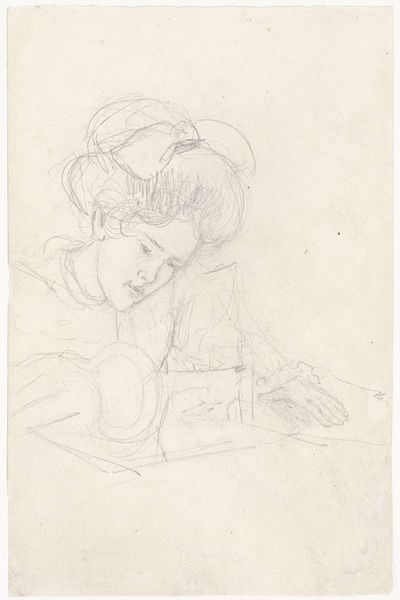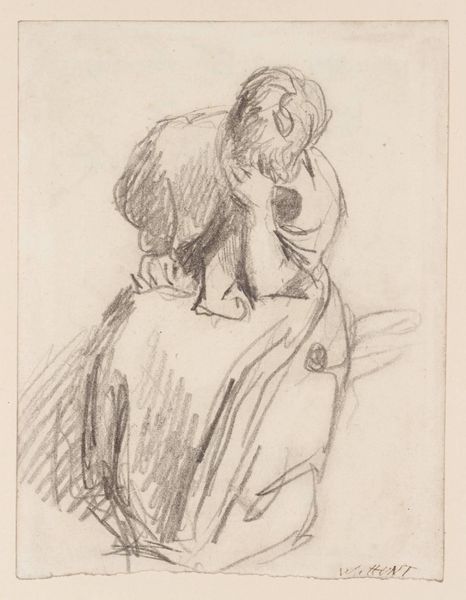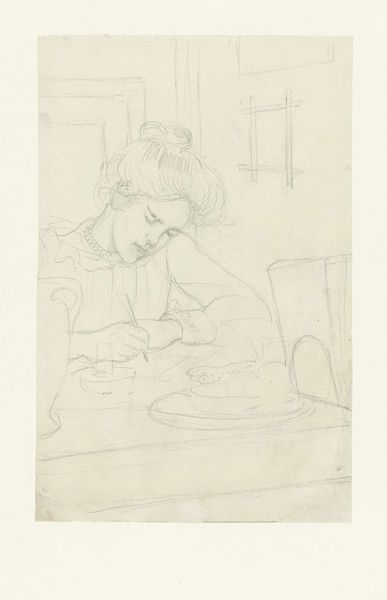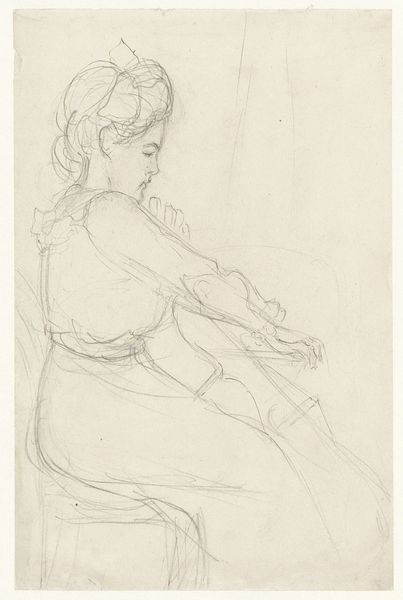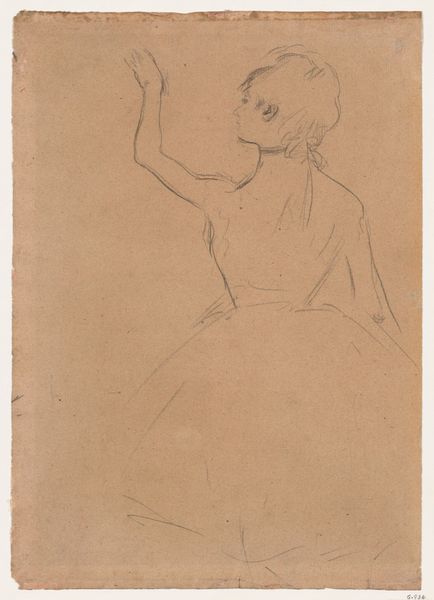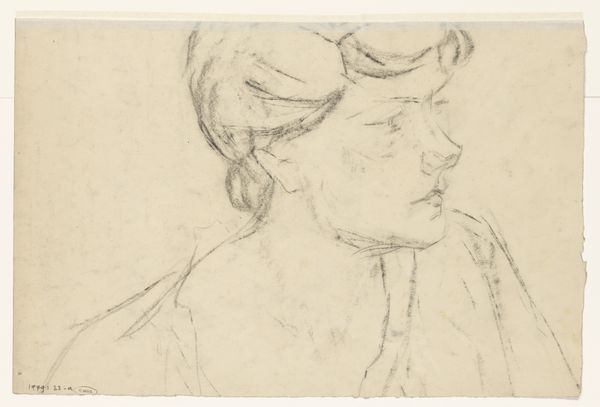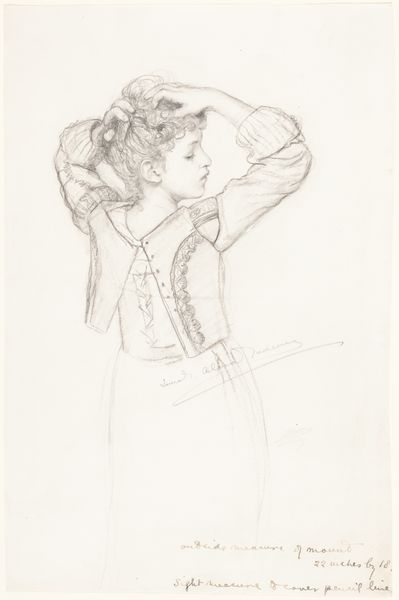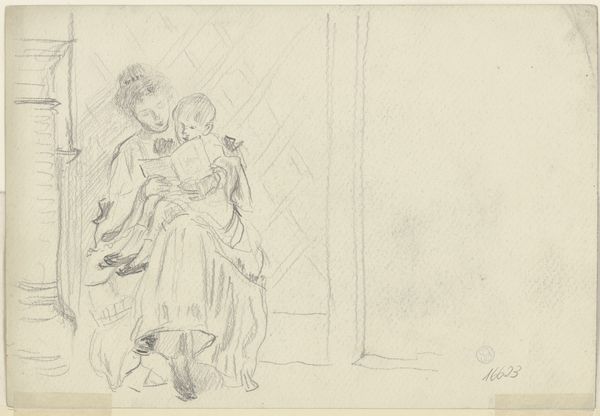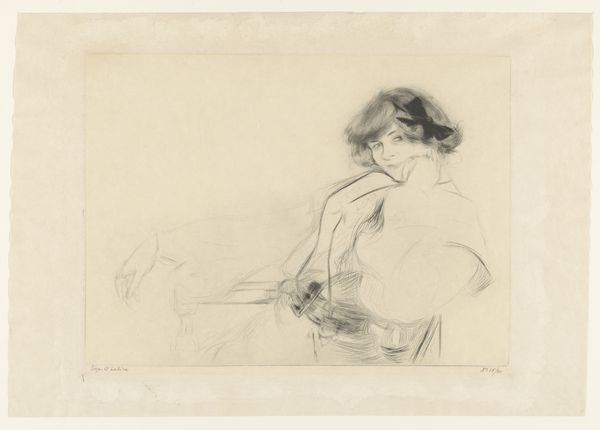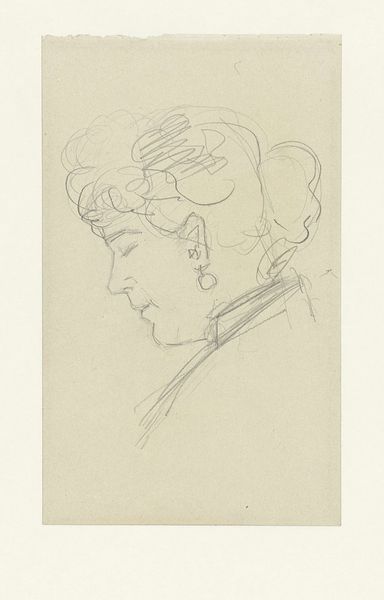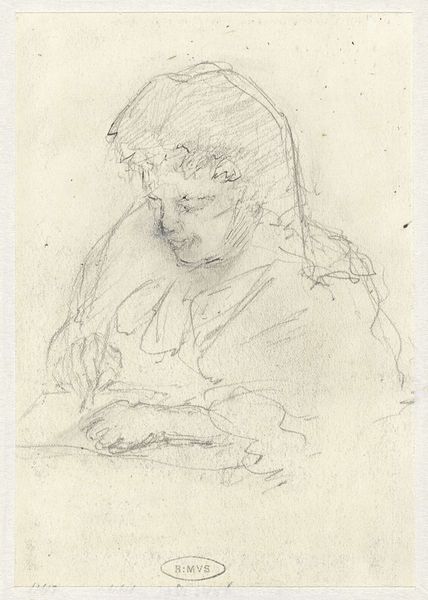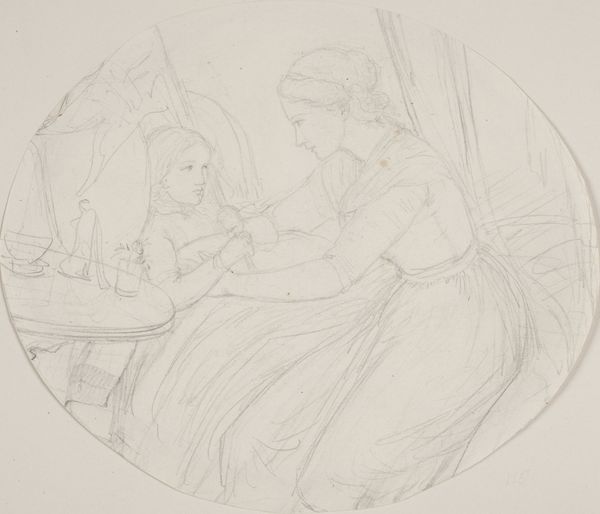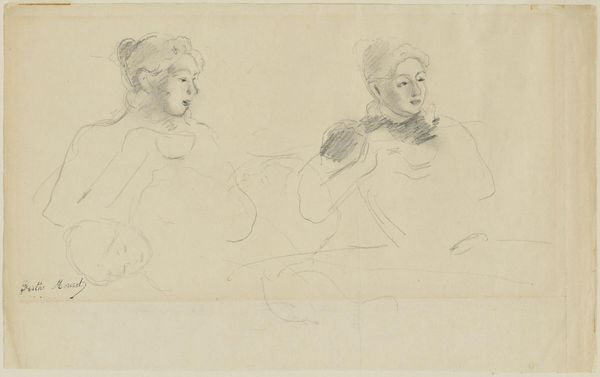
drawing, pencil
#
portrait
#
drawing
#
impressionism
#
pencil sketch
#
figuration
#
pencil
Dimensions: height 256 mm, width 165 mm
Copyright: Rijks Museum: Open Domain
Curator: Here we have a compelling pencil drawing titled "Twee tegenover elkaar zittende vrouwen," or "Two Women Sitting Opposite Each Other" created sometime between 1834 and 1911 by Jozef Israëls. Editor: It has such a quiet, introspective feel. They both look so thoughtful, almost burdened. Curator: Israëls was known for capturing everyday life, particularly of those in the lower classes. Look at the intricate lines describing the women’s faces and clothing, suggesting the fashion of the time but also hinting at something deeper, perhaps hardship, or resignation. Editor: And their placement, facing each other, suggests conversation, or at least a relationship between them. One woman's head is slightly bowed, her finger to her lips, as though silencing herself. There seems to be an imbalance in the power dynamics shown here; it speaks volumes about how women had limited voice or power during this period. Their emotional labor seems palpable. Curator: The hand gestures are really powerful. You've got one propping her face, looking downwards, with the other woman doing much of the same gesture—mirroring yet separated by the gaze they hold. It echoes ancient representations of Melancholia, figures consumed by inner worlds and a grief connected not only to an emotion but as a bodily reality too. Editor: Exactly. The mirroring creates a closed-off emotional space that seems typical to so many depictions of women during this time. How often are their lives—the reality of the female experience—reflected in the dominant art discourse? Curator: That is precisely what makes this such a powerful representation of not only individual portraiture but its historical positioning—Israëls captures the psychological space these women may be occupying. Editor: Yes. It invites a reconsideration of those histories and legacies. It holds their place there. Curator: In short, there's such a vulnerability and grace present in such minimal sketching—the work allows for layers of reading beyond the immediate appearance. Editor: A silent, powerful narrative embedded within those sketched pencil lines.
Comments
No comments
Be the first to comment and join the conversation on the ultimate creative platform.
